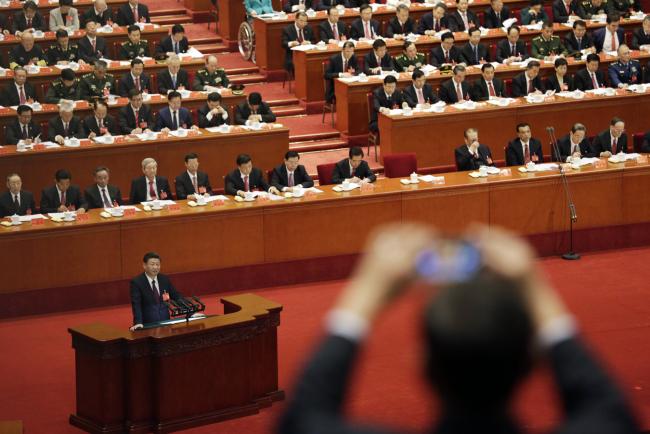(Bloomberg) -- Chinese President Xi Jinping’s new Silk Road to Europe traverses territory where most bond investors fear to tread.
Of the 68 nations China lists as partners in its Belt and Road Initiative, the sovereign debt of 27 are rated as junk, or below investment grade, by the top three international rating firms. Another 14, including Afghanistan, Iran and Syria, are either not rated or have withdrawn their requests for ratings.
President Xi’s vision, first proposed in 2013 and this week elevated to an official policy enshrined in the Communist Party’s constitution, involves spending as much as $1.2 trillion on railways, roads, ports and power grids over the next decade, according to Morgan Stanley (NYSE:MS). The intent is to open new business opportunities for domestic companies and extend China’s reach -- even though the route cuts through multiple conflict zones and some of the world’s most corrupt countries.
Outlining a road-map for his nation through 2050 at this month’s 19th Party Congress, Xi said the Belt and Road Initiative is pivotal. "We hope to make new ground in opening China further through links running eastward and westward, across land and over sea," Xi said.
The National Development & Reform Commission, China’s top planning body, and the Ministry of Commerce didn’t respond to written requests for comment on the financial risks in the Belt and Road Initiative.
While the idea of China reaching out to the world via trade along its Silk Road is centuries-old, this time around the economic heft behind the move stands a better chance of transforming the fortunes of the mostly developing countries along its route. According to McKinsey & Co., the undertaking has the potential to boost a region that will contribute 80 percent of global economic growth and vault 3 billion more people into the middle class by 2050.
Geopolitical Project
It is best to see the initiative as a "vast geopolitical project aimed at cementing China’s political and trade role over that of the U.S., not an economic one in the sense that each project will generate a return," said Michael Every, head of financial markets research at Rabobank Group in Hong Kong.
China has so far spent or committed more than $500 billion on the plan, according to data compiled by Bloomberg from official statements and company releases. The figure is considerably higher if lending by China’s big commercial banks is included, though comprehensive data on their activities isn’t readily available.
The financing comes in various forms, including from dedicated institutions like the $40 billion Silk Road Fund and others that aren’t directly linked, such as state-owned banks and the $100 billion Asian Infrastructure Investment Bank. Even part of China’s 2 trillion yuan ($300 billion) National Pension Fund will be invested.
Though their official documents don’t give specifics, Bank of China said it has lent more than $80 billion to 470 projects along the Belt and Road route as of the end of June, and other big state-owned lenders including Industrial & Commercial Bank of China and China Construction Bank have also lent billions.
Where the government goes, companies follow. In the first nine months of 2017, domestic companies have invested $9.6 billion in 57 countries along the route.
"Most Chinese spending under One Belt, One Road will see no financial payoff," said Derek Scissors, resident scholar at the conservative-leaning American Enterprise Institute in Washington. "The firms and banks involved are quite aware of the high likelihood of financial losses in many OBOR countries, even if they will not admit to it publicly."
Read More: China Codifies Crackdown on ‘Irrational’ Outbound Investment
Sovereign debt ratings matter less than the financial stability of each specific project, said Cao Yuanzheng, chairman of BOCI Research Limited in Beijing. "Even in the poorest countries, projects like public water system, electricity grid and railway are all commercially viable as long as there is income generated from user fees," he said.
While the risks may be high, the investments could have long-term benefits for China if they succeed, and in the meantime could help utilize China’s excess industrial capacity and expand the use of the yuan abroad, according to Michael Taylor, Moody’s chief credit officer for APAC.
"These countries have high growth and growth potential, and often what is holding them back from achieving that potential is a lack of infrastructure," Taylor said. If the investments succeed in raising productivity, then the countries would “generate the kind of economic growth that would be necessary to repay any debts," he said.

